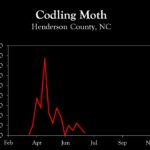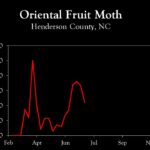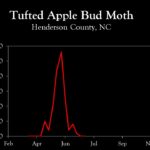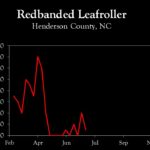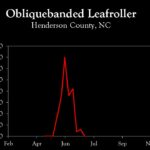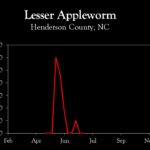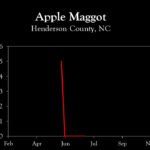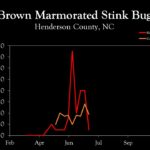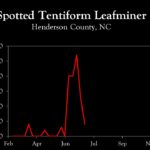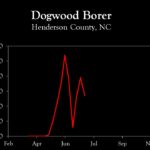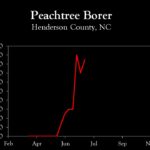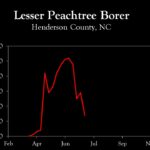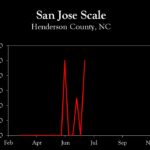WNC Orchard Insect Pest Populations – July 13, 2021
go.ncsu.edu/readext?808657
en Español / em Português
El inglés es el idioma de control de esta página. En la medida en que haya algún conflicto entre la traducción al inglés y la traducción, el inglés prevalece.
Al hacer clic en el enlace de traducción se activa un servicio de traducción gratuito para convertir la página al español. Al igual que con cualquier traducción por Internet, la conversión no es sensible al contexto y puede que no traduzca el texto en su significado original. NC State Extension no garantiza la exactitud del texto traducido. Por favor, tenga en cuenta que algunas aplicaciones y/o servicios pueden no funcionar como se espera cuando se traducen.
Português
Inglês é o idioma de controle desta página. Na medida que haja algum conflito entre o texto original em Inglês e a tradução, o Inglês prevalece.
Ao clicar no link de tradução, um serviço gratuito de tradução será ativado para converter a página para o Português. Como em qualquer tradução pela internet, a conversão não é sensivel ao contexto e pode não ocorrer a tradução para o significado orginal. O serviço de Extensão da Carolina do Norte (NC State Extension) não garante a exatidão do texto traduzido. Por favor, observe que algumas funções ou serviços podem não funcionar como esperado após a tradução.
English
English is the controlling language of this page. To the extent there is any conflict between the English text and the translation, English controls.
Clicking on the translation link activates a free translation service to convert the page to Spanish. As with any Internet translation, the conversion is not context-sensitive and may not translate the text to its original meaning. NC State Extension does not guarantee the accuracy of the translated text. Please note that some applications and/or services may not function as expected when translated.
Collapse ▲2nd Generation Codling Moth Remains Key Pest
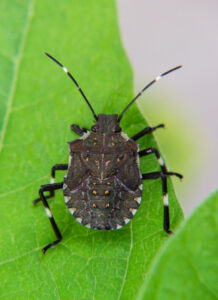 In orchards with elevation of about 2000 ft or greater (e.g., Henderson, Haywood, Wilkes, etc.) we are approaching the optimum time for an insecticide targeting second-generation codling moth. Degree-day accumulations in Henderson County are about 1370 as of July 13, and 1400 DD will occur later this week. In most cases a single application is sufficient for most orchards, the exception being where high populations exist – this is most easily based on pheromone trap captures >5 moths per week, or the presence of at least 0.5% damaged fruit up to this point in time.
In orchards with elevation of about 2000 ft or greater (e.g., Henderson, Haywood, Wilkes, etc.) we are approaching the optimum time for an insecticide targeting second-generation codling moth. Degree-day accumulations in Henderson County are about 1370 as of July 13, and 1400 DD will occur later this week. In most cases a single application is sufficient for most orchards, the exception being where high populations exist – this is most easily based on pheromone trap captures >5 moths per week, or the presence of at least 0.5% damaged fruit up to this point in time.
As mentioned in previous posts, insecticides targeting second-generation codling moth are usually not necessary where using mating disruption is being used.
In lower elevations such as Cleveland and Lincoln County, DD accumulations average about 1850, which means the majority of second-generation adults have emerged and egg hatch is about 65% complete. The need for additional insecticides targeting this generation are probably not necessary in most orchards, again the exception being in orchards with high populations.
Brown Marmorated Stink Bug: BMSB degree-day accumulations range from about 450 in higher elevations (≥2000 ft) to 675 DD at 1000 ft. Initial emergence of first-generation adults begins at about 750 DD, with insecticides recommended at 800 DD, which will occur in lower elevation orchards the latter part of next week (July 22-24). We are still several weeks away from emergence at elevations of 1500 ft or higher.
Learn more about southeastern apple insect pests at the Apple Insect Management page.
2021 Average Weekly Trap Captures
| HENDERSON COUNTY | |||
| Insects per trap | |||
| Jun 28 | Jul 6 | Jul 13 | |
| Codling moth | 2.5 | 2.5 | 0.5 |
| Oriental fruit moth | 36.0 | 33.5 | 22.0 |
| Tufted apple bud moth | 1.0 | 0.0 | 0.0 |
| Redbanded leafroller | 0.0 | 4.0 | 1.0 |
| Obliquebanded leafroller | 2.0 | 3.0 | 0.0 |
| Lesser appleworm | 2.0 | 0.0 | n/a |
| Apple maggot (abandoned and research orchards) | 0.0 | 0.0 | 0.0 |
| Brown marmorated stink bug (commercial) | 1.7 | 2.8 | 1.9 |
| Brown marmorated stink bug (unsprayed) | 4.0 | 4.0 | 0.5 |
| Spotted tentiform leafminer | 27.0 | 13.0 | 4.0 |
| Dogwood borer | 27.0 | 39.0 | 27.0 |
| Peachtree borer | 18.0 | 14.0 | 17.0 |
| Lesser peachtree borer | 25.0 | 29.0 | 14.0 |
| San Jose scale | 2.5 | 0.0 | 5.0 |
*Note that these averages illustrate only the timing of insect emergence and fluctuations in populations, and are not representative of population levels in any given orchard. The only way to have an accurate assessment of an individual orchard’s populations is to set up traps in that orchard.
2021 Accumulated Degree Days
| HENDERSON COUNTY | ||||
| Jun 28 | Jul 6 | Jul 13 | ||
| Codling moth (Biofix: April 10) |
1100 | 1220 | 1355 | |
| Oriental fruit moth (Biofix: March 27) |
1571 | 1721 | 1885 | |
| Tufted apple bud moth (Biofix: April 30) |
1212 | 1362 | 1527 | |
2021 Pest Trends (click to enlarge)
Visit WNC Orchard Insect Populations for archived posts.



